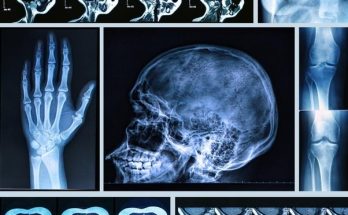Adaptive Radiotherapy: Personalized Treatment Based on Tumor and Patient Changes During Therapy
Adaptive radiotherapy (ART) represents a paradigm shift in radiation oncology, moving away from a “one-size-fits-all” approach to a personalized treatment strategy. It acknowledges that both tumors and patients can change during the course of radiation therapy due to factors like tumor shrinkage, weight loss, organ motion variations, or changes in a patient’s anatomy. ART aims to account for these changes by modifying the treatment plan in real-time or between fractions, maximizing tumor control while minimizing toxicity to healthy tissues.
I. The Need for Adaptive Radiotherapy:
Traditional radiotherapy planning relies on a single CT scan acquired before treatment begins. However, this static image may not accurately reflect the reality of a dynamic tumor and patient.
- Tumor Shrinkage: As tumors respond to radiation, they shrink. A fixed treatment plan may then irradiate a smaller target volume, potentially leading to underdosage of the tumor bed and increased dose to surrounding normal tissues.
- Weight Loss: Significant weight loss during treatment can alter the patient’s anatomy, affecting the accuracy of radiation delivery.
- Organ Motion: Organs, such as the lungs and bladder, can move during treatment due to respiration, changes in bladder or bowel filling, or other physiological processes. This motion can blur the radiation dose and increase the risk of side effects.
- Anatomical Changes: Changes in a patient’s anatomy, such as edema reduction or tissue healing, can also impact the accuracy of radiation delivery.
II. Components of Adaptive Radiotherapy:
ART involves a closed-loop process:
- Imaging: Acquisition of images (CT, MRI, PET) during the course of treatment. This might be daily, weekly, or at other intervals as deemed necessary.
- Contouring and Target Definition: Re-contouring of the target volumes and organs at risk on the updated images to reflect the changes in anatomy. This may involve manual or automated contouring tools.
- Treatment Planning: Re-planning the radiation treatment based on the updated contours. This could involve adjusting beam angles, intensities, or other parameters.
- Treatment Delivery: Delivery of the adapted treatment plan.
- Verification: Comparing the delivered dose with the planned dose to ensure accuracy. This may involve in-room imaging or other verification techniques.
III. Techniques and Technologies Used in Adaptive Radiotherapy:
- Image-Guided Radiotherapy (IGRT): IGRT uses imaging to verify patient positioning before and during treatment, allowing for real-time adjustments. It is a crucial component of ART.
- Cone-Beam CT (CBCT): CBCT scans acquired daily or at other intervals provide 3D images of the patient’s anatomy, allowing for visualization of tumor shrinkage, organ motion, and other changes.
- 4D-CT Scanning: 4D-CT scans capture tumor motion over time, allowing for the development of treatment plans that account for respiratory motion.
- Deformable Image Registration: Algorithms that can warp or deform images to match each other, allowing for automatic contouring and target definition on updated images.
- Automated Treatment Planning: Software tools that can rapidly re-plan the radiation treatment based on updated contours.
IV. Clinical Applications of Adaptive Radiotherapy:
ART is being explored and implemented for a variety of cancer types, including:
- Lung Cancer: Accounting for tumor shrinkage and respiratory motion.
- Prostate Cancer: Addressing changes in prostate size and position.
- Head and Neck Cancer: Adapting to changes in tumor volume and patient weight.
- Cervical Cancer: Accounting for changes in tumor size and shape during treatment.
- Bladder Cancer: Adapting to variations in bladder filling.
V. Benefits of Adaptive Radiotherapy:
- Improved Tumor Control: By accounting for tumor shrinkage and other changes, ART may allow for more effective delivery of the prescribed dose to the tumor.
- Reduced Toxicity: Minimizing radiation exposure to healthy tissues can reduce the risk and severity of side effects.
- Personalized Treatment: ART allows for treatment to be tailored to the individual patient, taking into account their specific anatomy and tumor characteristics.
- Potential for Dose Escalation: In some cases, ART may allow for a higher dose to be delivered to the tumor, potentially improving tumor control.
VI. Challenges and Limitations of Adaptive Radiotherapy:
- Increased Complexity: ART requires sophisticated imaging, contouring, planning, and delivery systems, making it more complex than traditional radiotherapy.
- Time and Resource Intensive: The additional imaging and planning involved in ART can be time-consuming and resource intensive.
- Motion Management: Accurately accounting for organ motion remains a challenge, particularly for tumors in the thorax and abdomen.
- Uncertainty in Target Definition: Changes in tumor boundaries and surrounding tissues can make it challenging to accurately define the target volume on updated images.
- Cost: The increased complexity and resource requirements of ART can make it more expensive than traditional radiotherapy.
VII. Future Directions:
- Automation: Further development of automated contouring, planning, and delivery systems will make ART more efficient and accessible.
- Real-time Adaptation: Real-time adaptation of the treatment plan during radiation delivery is a promising area of research.
- Integration with Biological Imaging: Integrating functional imaging (e.g., PET scans) with ART could allow for treatment adaptation based on tumor response.
- Personalized Medicine: ART is a key component of personalized medicine in radiation oncology, allowing for treatment to be tailored to the individual patient’s needs.
Adaptive radiotherapy is a rapidly evolving field with the potential to significantly improve cancer treatment outcomes. As technology advances and more clinical data become available, ART is expected to play an increasingly important role in personalized cancer care.



